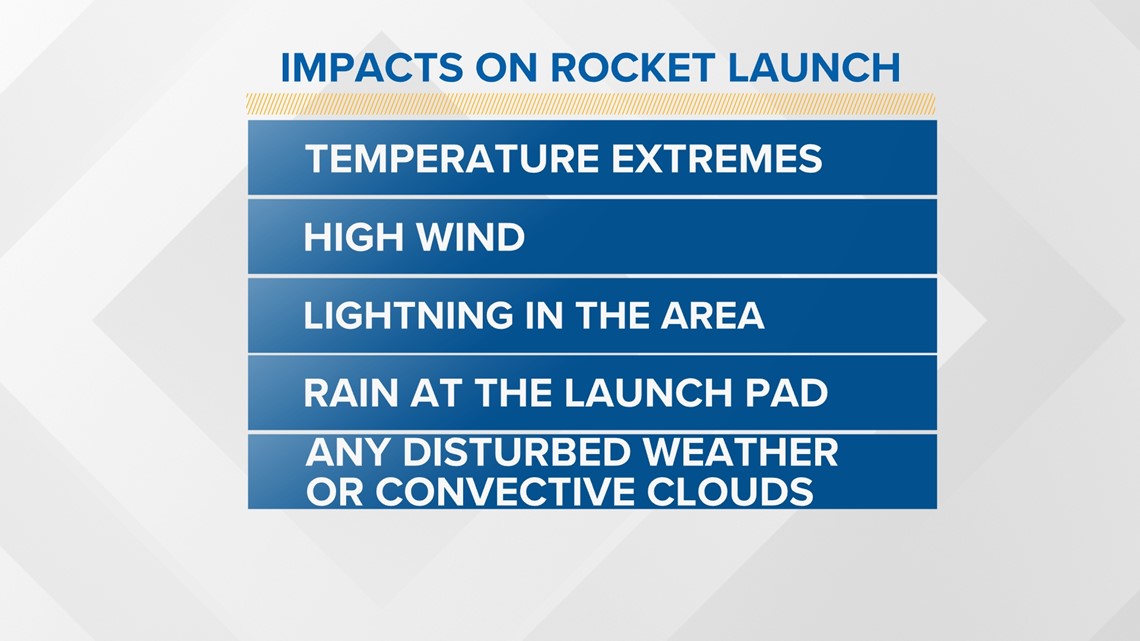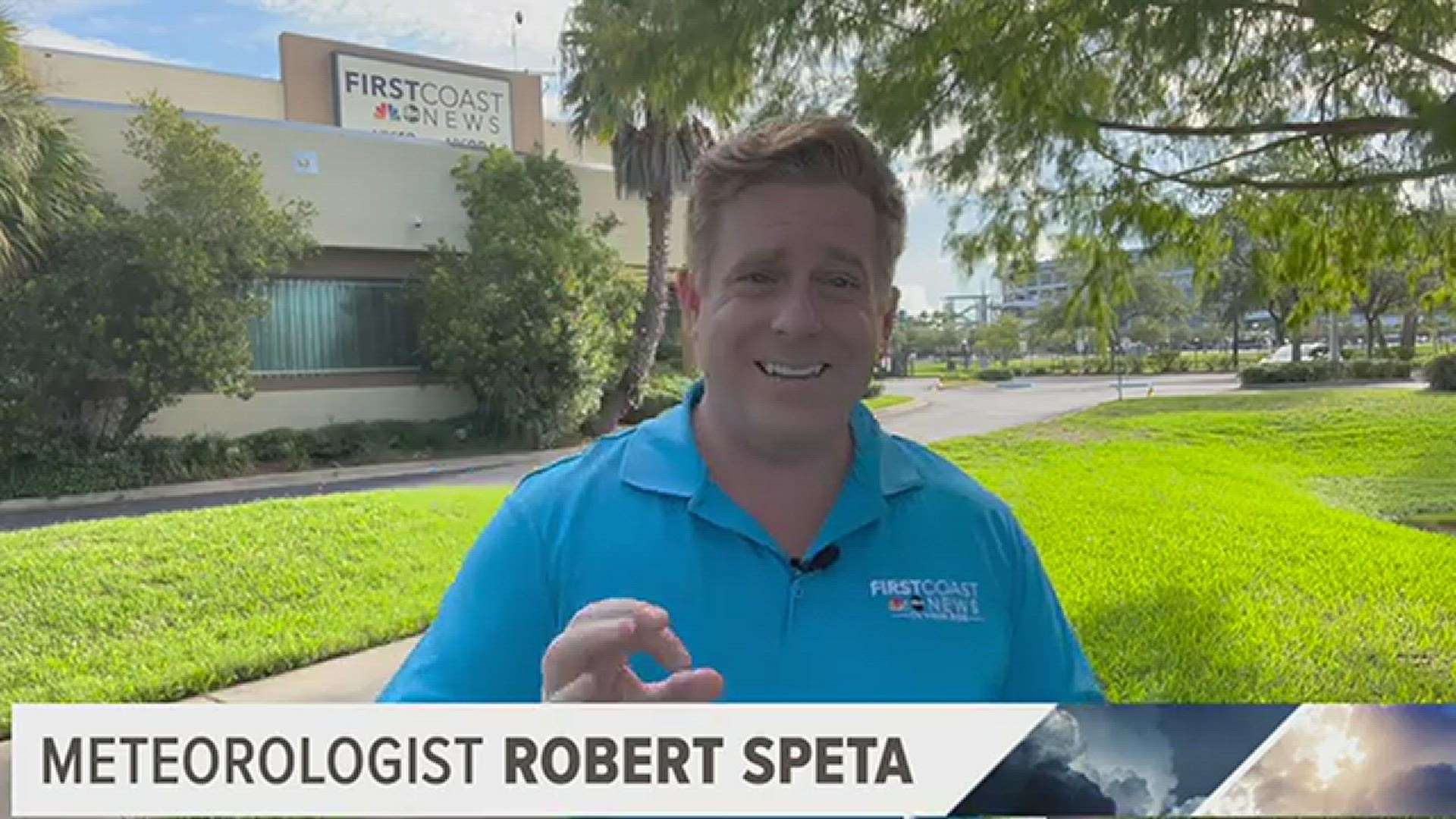JACKSONVILLE, Fla. — A lot of things need to come together just right for a successful rocket launch from the Space Coast. One of them being weather. During every launch a team of meteorologist monitor conditions around the launch site for anything ranging from extreme temperatures to lightning. The Chief of NASA’s exploration mission planning office Nujoud Merancy explains some of these impacts.
"Things like high winds, you can't have very high winds since the rocket is taking off next to the tower that was used to fill it with fuel. So you can't have a wind that will push it right in to the tower. We need no lightning, since it's a giant fuel tank."


One of the last times we went to the moon during Apollo 12 the Saturn V rocket was hit by lightning twice after take off nearly causing the crew to abort the mission. Therefore if there as lightning seen in the last 30 minutes, within 10 miles of the launch site or if any clouds are in the area capable of producing lightning the launch will be postponed.
VIA NASA " – Do not launch when lighting is observed and the cloud which produced the lightning is within 10 nautical miles of the flight path. Launch may not occur until 30 minutes has elapsed since the lightning flash, or the cloud has moved more than 10 nautical miles away. "
Temperature extremes are also a factor. Especially cold temperatures, which was the reason the Challenger tragedy took place after an O ring cracked on one of the rocket boosters during record breaking cold.
There in fact is multiple pages of official weather restrictions from NASA that could take place.

